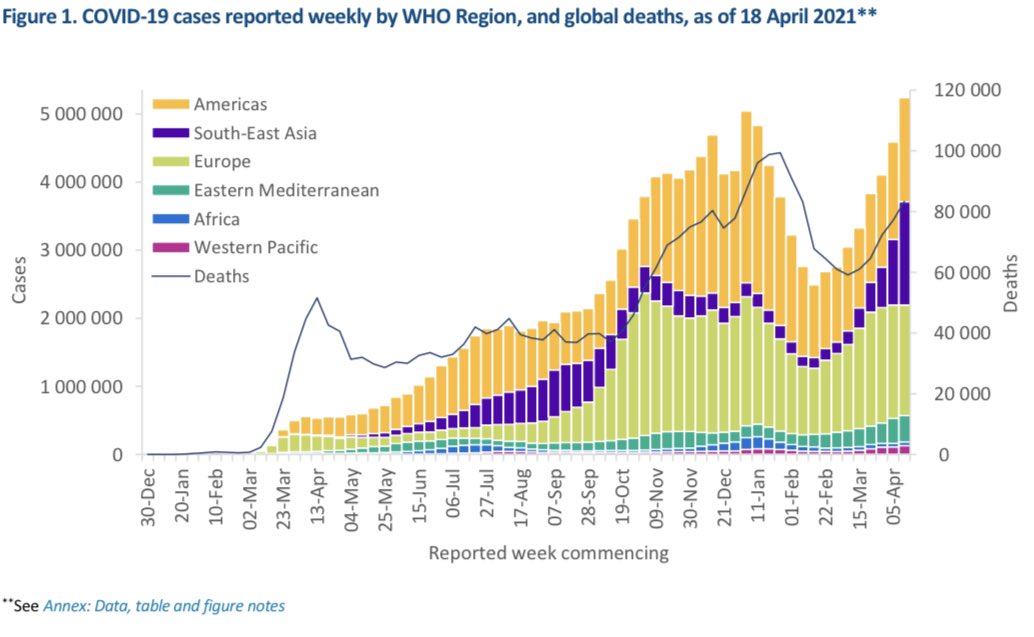
The pandemic is splitting in two. While the 🇺🇸 vaccinates its way out of the nightmare, Covid is raging around the 🌍. Yet just 0.2% of all Covid vaccines are going to low-income countries.
Here's what the U.S. can & must do to get the world vaccinated. 🧵coronavirus.medium.com/the-u-s-is-fin…
Here's what the U.S. can & must do to get the world vaccinated. 🧵coronavirus.medium.com/the-u-s-is-fin…
1. The U.S. has secured deals for over 1.2 billion doses of Covid-19 vaccines from six companies. That’s more than enough to vaccinate every American several times over.
As vaccine demand starts to lag in the U.S. and doses pile up, we need a plan for how we’ll share the excess.
As vaccine demand starts to lag in the U.S. and doses pile up, we need a plan for how we’ll share the excess.
The most obvious solution is donating the vaccine to the @WHO initiative COVAX to deliver Covid vaccines equitably to countries around the world.
Sharing our bounty would immediately help address Covax’s supply shortage. It would also reestablish the US as a global health leader
Sharing our bounty would immediately help address Covax’s supply shortage. It would also reestablish the US as a global health leader
2. The U.S. must support a temporary TRIPS waiver at the @wto that would allow countries to produce Covid therapeutics and vaccines domestically.
South Africa and India first asked for this waiver last October. Over 100 low- and middle-income countries have backed their proposal.
South Africa and India first asked for this waiver last October. Over 100 low- and middle-income countries have backed their proposal.
As major funders of the Covid vaccines, the US has a lot of say — and sway — over pharma companies. US support would play a significant role in obtaining a temporary waiver.
We can’t protect the profits and patents of pharma companies at the expense of patients and public health.
We can’t protect the profits and patents of pharma companies at the expense of patients and public health.
3. Today many countries around the world depend almost completely on vaccine imports.
U.S. financial and technical support can help build critical vaccine manufacturing capacity in countries where vaccine production is severely limited or nonexistent.
U.S. financial and technical support can help build critical vaccine manufacturing capacity in countries where vaccine production is severely limited or nonexistent.
For example, in Africa where only 1.3 doses of Covid-19 vaccines have been administered per 100 people (compared to 45 doses per 100 people in North America), U.S. support for scaling up vaccine production could make a dramatic impact.
By donating excess vaccine doses, removing patent protections for lifesaving medications & vaccines, and helping bolster global vaccine manufacturing capacity, the US can ensure the world doesn’t come to the end of this pandemic less prepared to prevent & respond to the next one.
Read more about how the U.S. can help get the world vaccinated in my latest for @medium 👇
coronavirus.medium.com/the-u-s-is-fin…
coronavirus.medium.com/the-u-s-is-fin…
• • •
Missing some Tweet in this thread? You can try to
force a refresh





